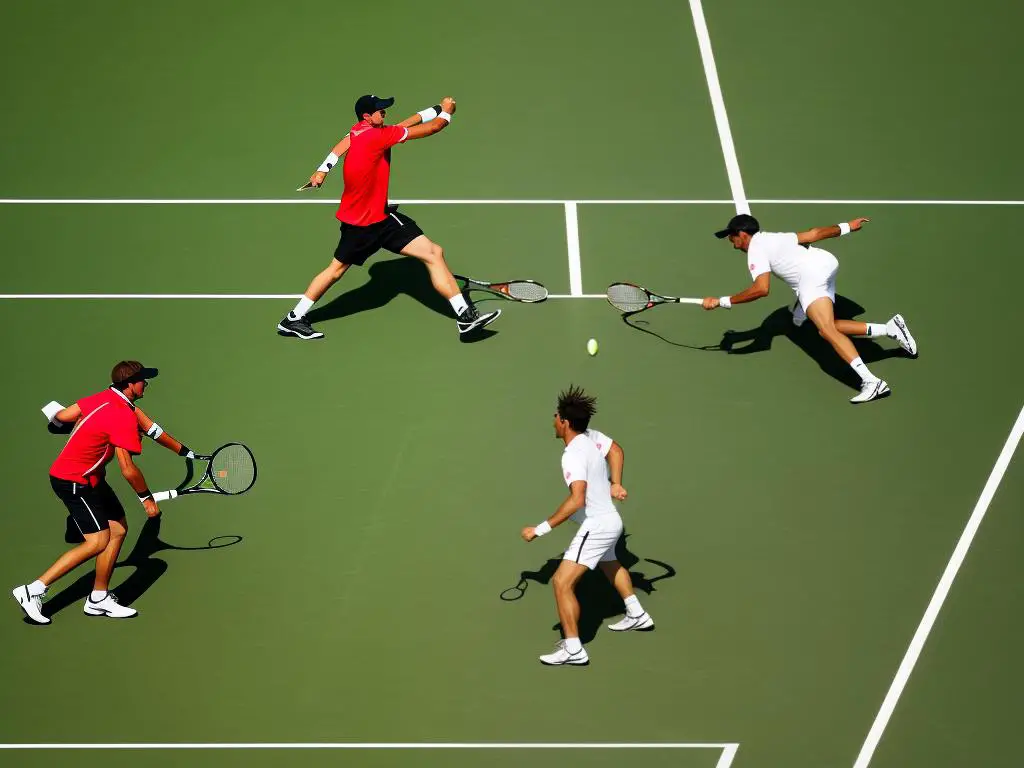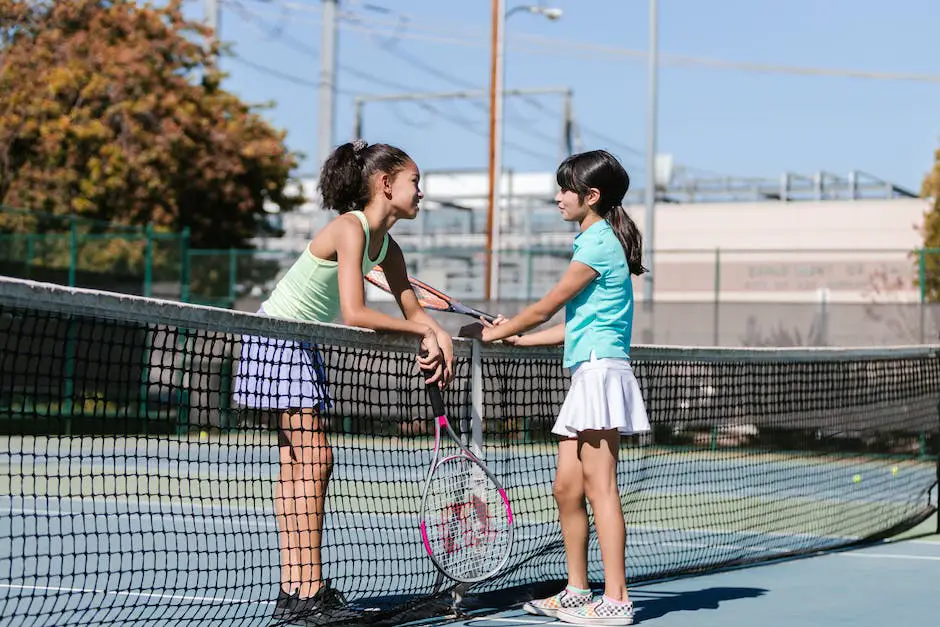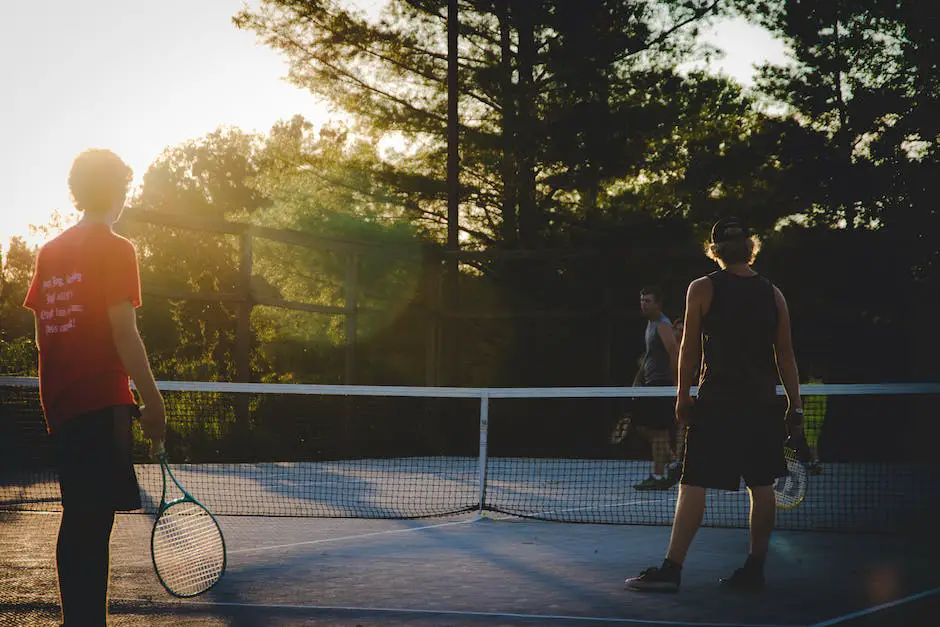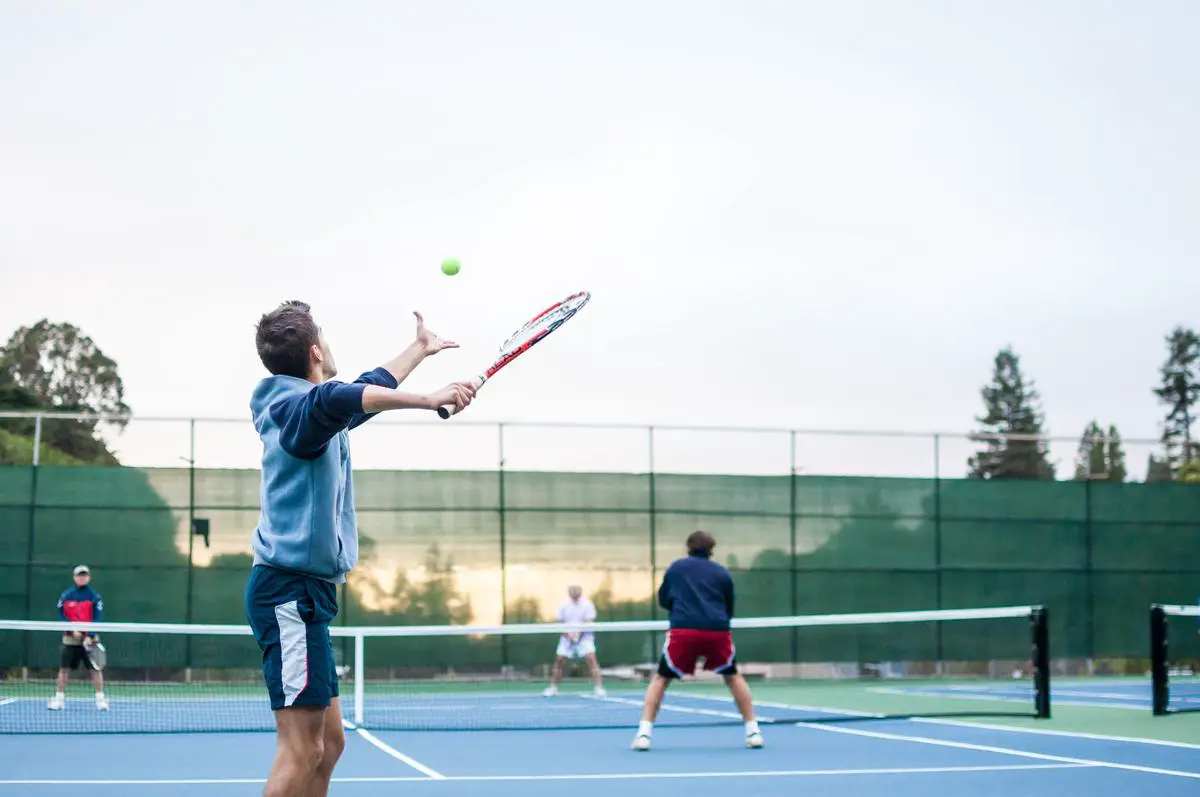Tennis, unlike many sports, offers a unique experience where competing as a pair isn’t just about combining two single players’ individual skills. Rather, it’s a tactical battlefield involving strategy and effective teamwork. The doubles tennis format, in particular, demands a keen understanding of specific roles, such as that of the server, receiver, and their respective partners. This knowledge, coupled with effective communication strategies and understanding court positioning and movement is paramount to succeeding. Moreover, making optimal use of assorted shots and knowing their placement on the court can vastly enhance your overall performance. Let’s delve into these areas, shedding light on how to perform at your peak in doubles tennis.
Understanding Roles in Doubles Tennis
Understanding Roles in Doubles Tennis: The Server
In doubles tennis, the server initiates the point by serving the ball diagonally into the service box on the opposite side of the court. The server aims to put their opponent, the receiver, on the defensive from the onset of play. With a powerful, accurate serve, the server has the potential to score an ace or force a weak return, which their partner can take advantage of at the net. Positioned at the net, the server’s partner uses strategic volleying to cut off angles, disrupt the receiver’s shots, and end the point quickly.
The Role of Receiver in Doubles Tennis
In contrast to the server, the receiver’s role is to return the server’s initial shot. The receiver must try to create a shot that places the serving team on the defensive. The challenge for the receiver is, therefore dealing effectively with the server’s speed and spin. The receiver’s partner usually takes a position near the center of the baseline, getting ready to react to the server’s partner’s volleys or intercept a weak serve. The receiver’s partner should also be alert to cover more of the court if the receiver gets pulled out wide by the serve.
Strategic Roles of the Server’s Partner in Doubles Tennis
The server’s partner has a challenging role – standing at the net and trying to intercept any potential returns from the receiving team. The server’s partner should be prepared to volley, disguise their intentions, and constantly apply pressure to the opposing team. The server’s partner should block off as many angles as possible, making it difficult for the receiving team to find an opening.
The Receiver’s Partner and Their Role in Doubles Tennis
The receiver’s partner, positioned near the middle of the baseline, should be ready to react quickly to the server’s partner’s volleys. Their main aim is to support the receiver, cover the court if the receiver is pulled wide, and put away any loose balls. A key strategy for this role is to anticipate the play and move constantly, challenging the server’s partner at the net and applying pressure.
In summary, each role in doubles tennis has its unique strategies and responsibilities. Understanding these distinctions allows each player to contribute effectively towards their team’s success. They must balance their aggressive plays with smart positioning and anticipation. Regardless of whether you are serving, receiving, or supporting your partner, every shot should be played with a strategic intention in doubles tennis.

Team Communication
Understanding Team Communication in Doubles Tennis
Team communication in doubles tennis is crucial to maintaining coordination, ensuring both players are on the same page, and optimizing play. It prevents both players from attempting to hit the same ball or leaving a ball that each assumes the other will get. Effective communication in doubles tennis takes a blend of verbal and non-verbal cues, each equally important in contributing to the team’s success.
Developing Verbal Communication
Verbal communication is one of the most straightforward methods of communicating in any team sport. In doubles tennis, players often use quick, concise code words or phrases to relay strategies or positions to their partners. For instance, the player at the net might say “yours” if their partner has a better shot, or “mine” if they can take the shot. Other phrases can include instructions on where to serve, calling out opposing player positions, or relaying plans for specific plays.
Mastering Non-Verbal Communication
Non-verbal communication is less straightforward but equally valuable. Signals in doubles tennis can range from slight gestures to pre-arranged hand signs. For example, the server’s partner might use hand signals behind their back to indicate which side they’re planning to guard after the serve. This preemptive information aids the server in deciding where to place the serve. While behind the baseline waiting for the return-of-serve, the non-receiving partner may use a hand signal to notify their partner where they intend to move once the serve is in play.
Eye contact is a fundamental non-verbal communication tool. A quick glance can be an effective way to silently communicate strategy or intent. This helps maintain a constant state of awareness and timely reaction to various plays without alerting the opposing team.
Prioritizing Situational Awareness
Situational awareness in doubles tennis is a form of non-verbal communication. It involves understanding the court, the ball’s position, as well as the opponents’ positioning and potential strategy. Good situational awareness helps the team adjust their strategy on the fly and stay one step ahead of the opposition.
Practice and Consistency
Effective communication does not come automatically – it requires consistent practice. Both partners need to understand and be comfortable with the communication methods used. Regular practice will help both teammates understand each other’s preferences, strengths, and weaknesses, which can refine verbal and non-verbal communication cues, leading to successful team performance.
In conclusion
Proper team communication in doubles tennis is essential for victory. Partner synchronization through verbal and non-verbal cues, along with situational awareness, can significantly improve team dynamics and game outcome. Regular practice and understanding between the pair will enhance these communication skills, leading to better collaborative play.

Court Positioning and Movement
Understanding Basic Court Positions in Doubles Tennis
In doubles tennis strategy, it’s critical to know your court positions. The right player, also known as the “Ad Court” player, is primarily responsible for returning the serve when the score is ad-in or ad-out. The left player, or the “Deuce Court” player, returns when the game score is an even number.
Importance of Communication in Court Positioning
The key to successful court positioning lies in strategic communication between you and your partner. A simple nod, a hand signal, or a call can help both of you avoid collisions and confusion about who should take the shot.
Maintaining the One Up, One Back Position
One effective position in doubles play is the “One Up, One Back” formation. This involves having one player at the net and one player at the baseline. This position is ideal for offensive plays as it allows for wide areas of coverage, however, it’s also vulnerable to lobs from deep-playing opponents.
Utilizing Both Up Position for Aggressive Play
When both players are at the net, it’s referred to as the “Both Up” position. This setup is an aggressive offensive strategy that puts pressure on the opposing team by reducing their reaction time. The downside, however, is that it leaves your court open to lobs.
Both Back Position for Defensive Strategy
Conversely, the “Both Back” position, where both players stand at the baseline, is a defensive strategy. While this provides strong coverage against lobs and allows easier switching between sides, it also leaves your net open for opponents to make ‘drop shots.’
Dynamic Court Movement and Poaching
In doubles, movement on the court should be dynamic. When your partner moves, you should also move to maintain balance and coverage. In many cases, if your partner goes wide, you should move towards the center. “Poaching” is a game strategy where the net player aggressively moves to intercept a return shot meant for their partner at baseline.
Switching Sides for Server Advantage
In some situations, teams may choose to switch sides. The Ad player may have a strong forehand and the Deuce player a strong backhand. Therefore, they might swap positions after the serve, allowing them to play to their strengths while confusing opponents.
To continue to improve your court positioning and movement in doubles play, it’s advisable to regularly practice these formations and strategies while refining communication with your partner.

Shot Selection and Placement
Understanding Different Types of Shots in Doubles Tennis
In doubles tennis, mastering a variety of shots is essential to applying an effective strategy. These include volleys, lobs, poaches, and ground strokes. Each type of shot can be utilized in different situations to exploit your opponents’ weaknesses and bolster your team’s offensive and defensive play.
Effective Use of Volleys in Doubles Tennis
Volleys are crucial for aggressive doubles play. Performed at the net, volleys give your team an advantage by reducing the opponent’s time to react. Aim your volley shots at an opponent’s feet. A low, fast volley is hard to return and requires quick footwork and decision-making from your competitor. If both opponents are at the back of the court, aim your volley down the middle to create confusion and force them to decide who will take the shot.
Implementing Lobs in Doubles Strategy
Lobs can be a strategic weapon in doubles tennis. A well-placed lob shot can give you time to regain your court position or disrupt a net-rushing opponent. Use lobs when your opponents are positioned at the net, forcing them to move back and reposition quickly. For best results, try to place lobs over the head of the opponent, aiming for the baseline.
Ground Strokes and Their Role in Doubles Play
Ground strokes, including forehands and backhands, are the bread and butter of tennis strategy. In a doubles match, ground strokes can be used to create openings, keep opponents at bay, or play it safe when out of position. Aim your ground strokes down the line to cut the court angle and keep the opponents stretched wide and unable to easily volley. You can also target the center of the court to provide less angle for your opponents to return.
Poaching: A Key Doubles Strategy
Poaching involves a player at the net moving across to volley a ball intended for their partner. This is a great tactic to disrupt opponent’s rhythm or to take control if you’re the stronger net player. Anticipate the opponent’s shot and make a fast, firm volley into the open court space or at the feet of the opposing net player.
Mixing up Shot Placement
Effective shot placement relies on unpredictability. Always aim to vary your shots and avoid predictable patterns. This keeps your opponents guessing and disrupts their rhythm. For optimal shot placement in doubles play, target the weaker opponent, exploit gaps in court coverage, and play the ball down the middle to create confusion between opponents.

Developing a comprehensive understanding of your role, be it server or receiver, and facilitating open communication with your partner forms the cornerstone of a successful doubles strategy. Knowing where to position yourself on the court and how to seamlessly move with your partner is equally important. Furthermore, having a rich arsenal of shots at your disposal and knowing when and where to use them can give you the upper hand in the match. Gaining a holistic understanding of these strategic elements will no doubt enhance your performance and enjoyment of doubles tennis, positioning you and your partner on a path to victory. Ultimately, doubles tennis strategy is not just about hard hitting and agile movement, but also about meticulous planning, intelligent plays, and effective teamwork.